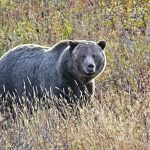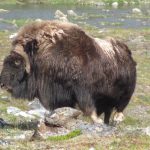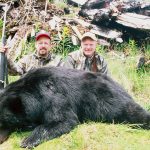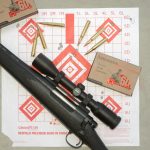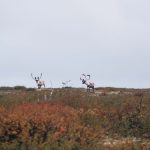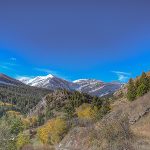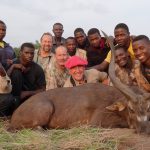On a muskox hunt, you have many options for timing. Keep the weather, and the daylight, in mind.
At the hunting conventions, it’s part of my job to talk to a lot of hunters. At the conventions just past, both DSC and SCI, I was struck by the number of people who came by the booth asking about muskoxen, some with an expedition booked, others considering a hunt. Makes sense; the Arctic communities have been locked up tighter than most places through the pandemic, but they are ready to get back to business . . . and life.
Me, I think the muskox is just plain cool, a totally unique animal unlike anything else in the world. However and whenever, the muskox hunt is not exceptionally difficult, generally successful, relatively short, and a great opportunity to see their amazing Arctic habitat without, for example, the pain (and cost) of a polar bear hunt.
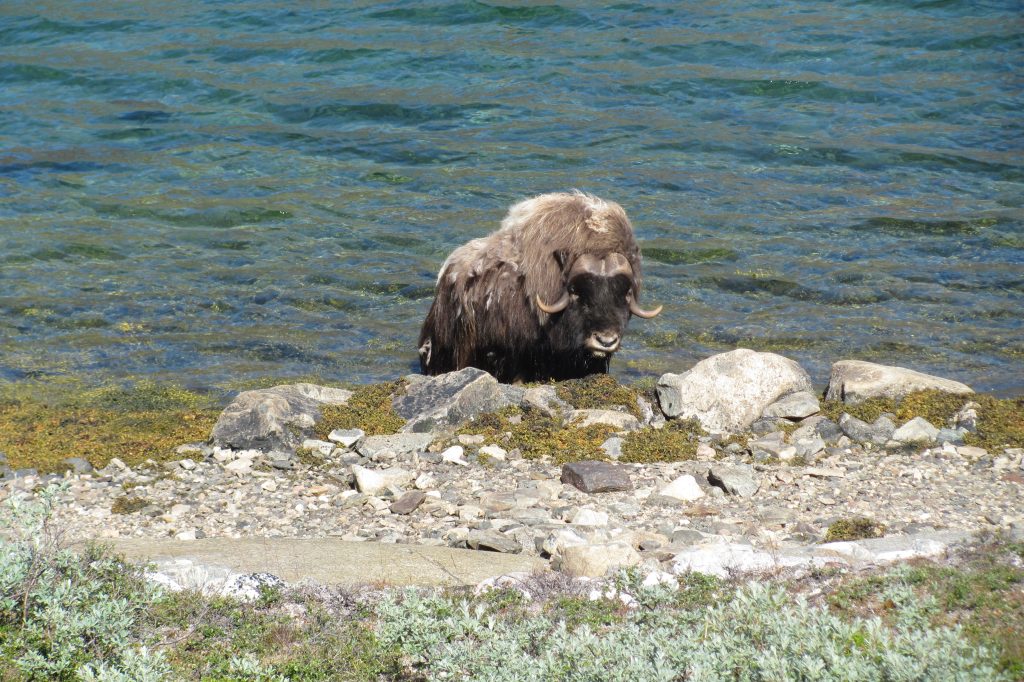
Things have changed. When I was young, a muskox was an almost impossible prize. Canada’s muskoxen were at a low ebb and had been protected for decades. The only opportunity was to draw a permit in Alaska, but it wasn’t an easy draw and, like all drawing hunts, difficult to plan. Canada offered her first modern permits for nonresident sport hunters forty years ago. I jumped at the chance, hunting on Victoria Island out of Holman Island in November.
I don’t say I wouldn’t do that again, but winter comes early up there! It was my first Arctic hunt; the cold was shocking, but I was dressed for it and had no problems. The challenge that late in the year is the short daylight. Most of our travel was in darkness; we had possibly four hours of effective hunting light, not much time to find and take a good bull. In that short window of daylight, I took a wonderful, heavy-bossed bull. The challenge: twenty hours of darkness in a tent on the ice! Again, it wasn’t the cold; my Inuit guides put caribou skins down on the ice, pegged the tent well, and if too much chill crept in, a Coleman stove, lantern, or just candles, quickly chased it away. But, for a guy like me with borderline ADD, the “nights” were awfully long.
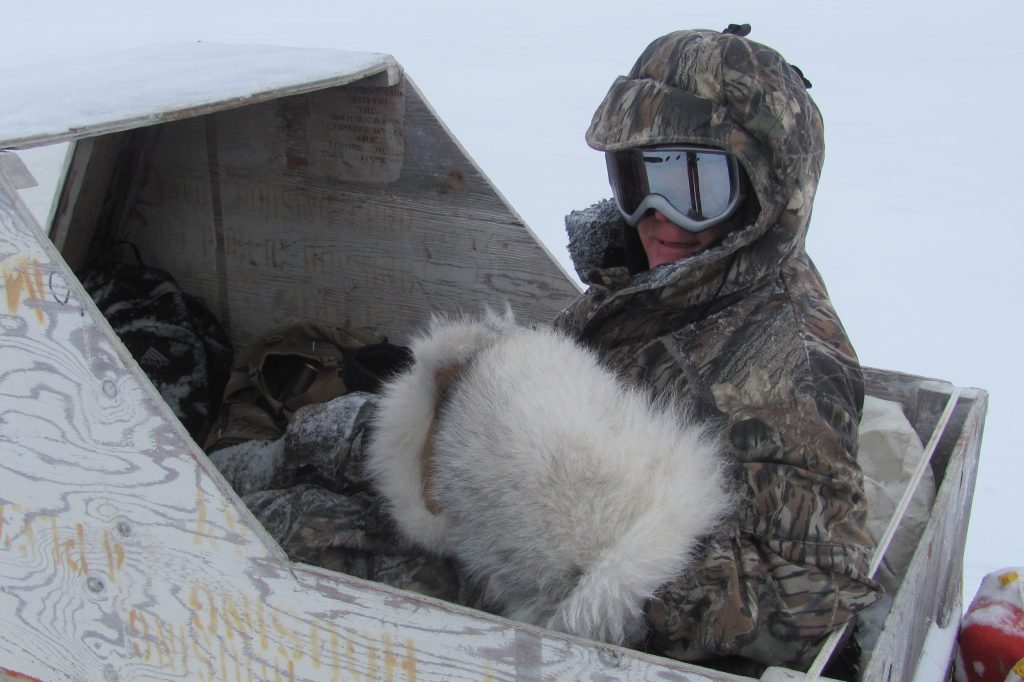
In the 1980s and 1990s, muskox numbers blossomed all across the North, and are still increasing. Today there are lots of choices, and long seasons. Nunavut offers Greenland muskoxen on islands, and barren ground muskoxen on the mainland. The latter gets bigger in the body with possibly larger horns (if you’re lucky), but the two races are visually indistinguishable. Alaska has more permits in more areas (still by drawing) for her introduced muskoxen. Greenland is open, with a large, lightly hunted population and some big bulls. Heck, there’s even been some muskox hunting in Russia.
I’d be the first to say that few of us really need more than one muskox. But, although usually short, it’s an interesting hunt for a fascinating animal. So, being a glutton for punishment, I’ve hunted muskox three times in Canada’s Arctic, and once in Greenland. All at different times! This is not vast experience, but probably more than most who don’t live up there.
The Arctic is cold! Fortunately, we have much better cold-weather gear today, just pay attention to your outfitter’s recommendations. The two primary restrictions for Arctic hunting are daylight and trafficability. December through February are too dark; May through September you have all the daylight you want (with extra to spare). Travel is a larger issue. Today, most Arctic hunting is done after freeze-up, October through April, with the hunter in a sled (komatik) behind a snow machine. (For polar bear, this is allowed for travel from the Arctic communities, but the actual hunt must be done on foot or by dogsled.) The ride is drafty and bumpy. There will be many hours of that drafty, bumpy ride, but imagine the stamina of your Inuit guide, hunched into the wind. Actually, that’s one of the charms of a late fall/early spring muskox hunt, just observing how wonderfully the Inuit deal with their environment.
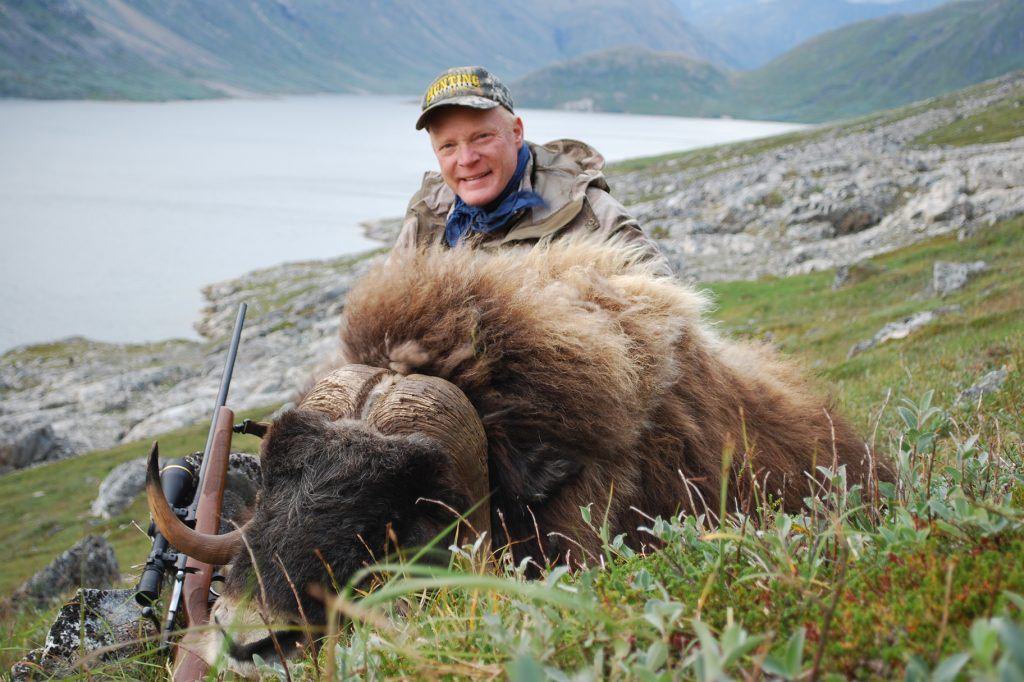
In summer, after ice breakup, most Arctic hunting must be done from boats, whether along lakeshores (as for much caribou hunting), or ocean waters among islands and shorelines. It’s not my job to determine which is best. All times and areas are good, but there are differences.
My second muskox hunt was in April, with the late Fred Webb. It was still plenty cold, but that’s normal, and you dress for it. Daylight was the big difference–seventeen hours of it! Lots of bumping and freezing in the komatik, but time to travel and look for muskox. For hunting partners, I had Colonels Charles Askins and Art Alphin, both characters and gone now, and Fred Webb himself was a one-man entertainment center. We got cold, but early spring is a marvelous time to see the Arctic. When I did my one and only polar bear hunt, I chose late April, and it was again a magical time, bitter cold but not brutal, and on a rare calm and sunny day, glorious.
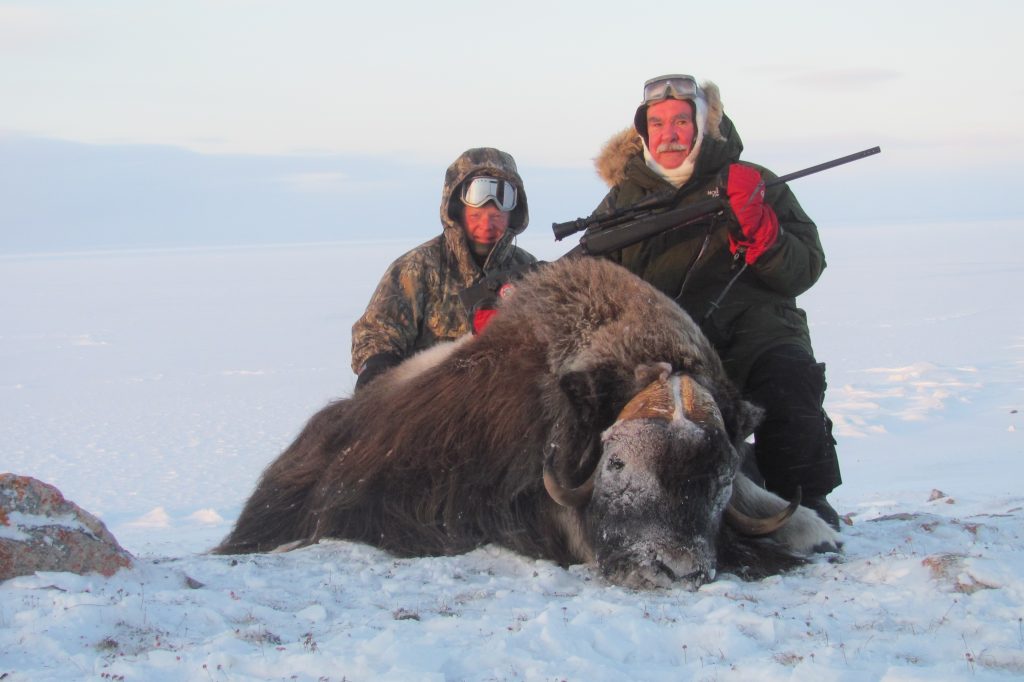
My third Canadian muskox hunt was in October, out of Cambridge Bay with Shane Black’s Canada North, today by far the largest Arctic outfitter. Ideally, that’s a bit late, bitter cold with daylight shrinking fast. Here’s the deal: Major John Plaster was hunting muskox. I was not; I wanted an Arctic Islands caribou. Because of caribou movement on Victoria Island, this caribou hunt is best done after freeze-up, and even this window is short because these northernmost caribou drop their antlers early. So, we went in October. John got a fine muskox, and I got a good caribou. It was very cold and days were short, but it was much more pleasant than November, with short days but adequate daylight to hunt and be successful, and almost certainly the best opportunity for a caribou/muskox combination.
And then there’s summer hunting. Because of boggy tundra, summer muskoxen are hunted mostly by glassing from boats, then stalking ashore. This hunting is done in Canada and, in the right places, can be combined with caribou. I haven’t done that hunt in Canada, and probably won’t; I don’t think I can find an excuse to hunt another muskox. Donna and I did a summer muskox hunt in Greenland with Bjorn Birgisson’s Icelandic Hunting Club, at the end of July, and we remember it as one of our most enjoyable North American hunts.
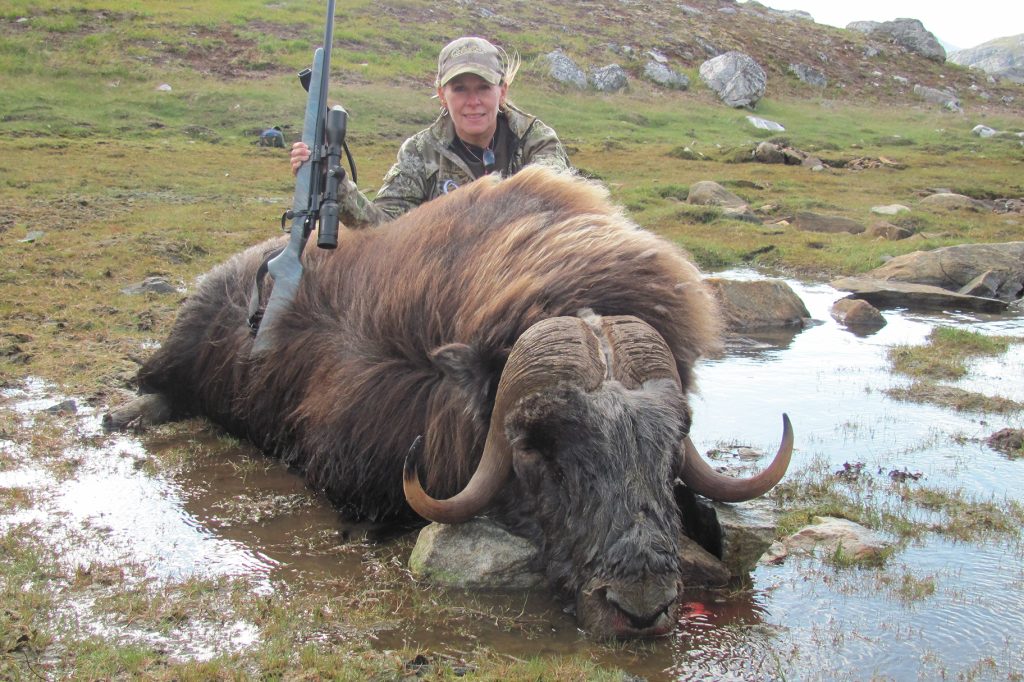
The muskox, Ovibos moschatus (“musky sheep-ox”) is an amazing animal, perfectly adapted to its harsh environment, with unusual horns, long hair, and a thick layer of underwood (qiviut) that allows it to survive Arctic winters, and was traditionally gathered and knitted by native peoples. Whether your choice is rug, shoulder, or life-size mount, with a muskox the incredible coat is almost as important as the horns. The muskox looks huge, but most of its profile is hair; the animal underneath the fur isn’t as big as you think! On a summer hunt, I was worried about the quality of the skin. Not a problem! Some of the underwool was molted and shaggy but, for taxidermy purposes, summer coats proved just fine.
Year-round, you need luck with the weather, but along the southwestern coast of Greenland, we caught perfect summer weather. The fjords were full of floating ice chunks in fantastic shapes (iceberg “calves”). We glassed many herds of muskox and could be picky, a difficult luxury when it’s well below zero and a storm is coming fast.
Now, the Arctic is the Arctic, and weather is a factor. On that April hunt with Alphin and Askins, we got caught in a storm along the Queen Maude Gulf. Our Inuit guide had a cousin; we broke into his fishing cabin, and waited out the blow for two days while Askins entertained us with stories of the old Border Patrol. In Greenland, we had glorious weather for three days, then moved along the southern coast to hunt reindeer. Weather caught us there, and although successful, we had rain, wind, and fog the rest of the hunt.
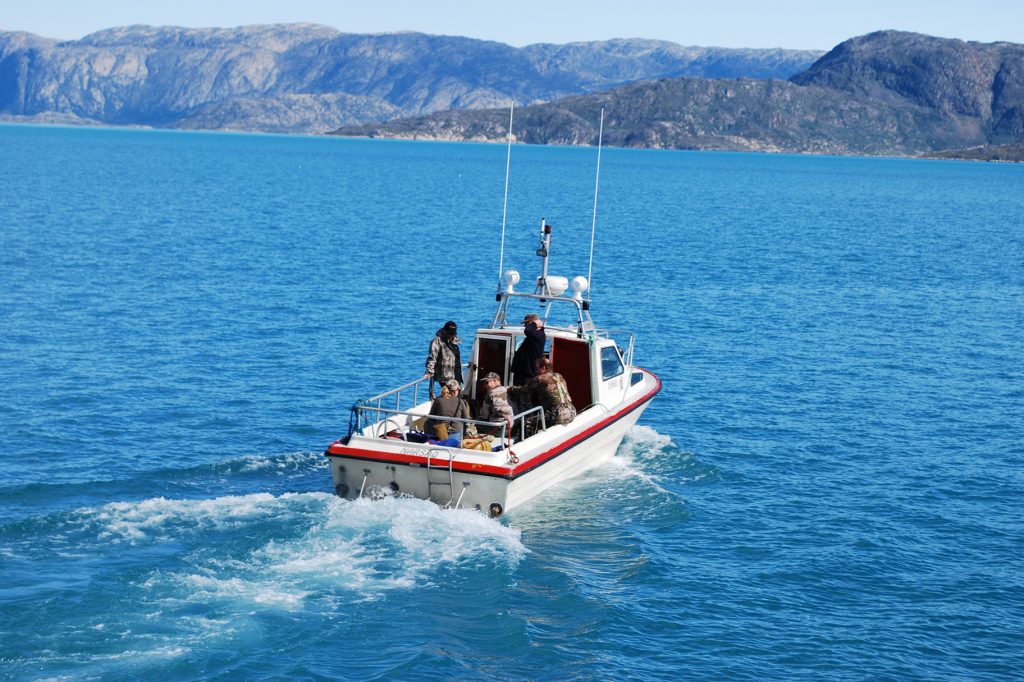
On any Arctic hunt, you’re banking on good weather. Today, numbers are such that success is routine, but it’s common to lose hunting days to weather. After that storm broke with Alphin and Askins we had just a couple days to take three muskoxen. We got it done, all nice bulls, but when you must wait out weather—or know there’s a storm coming—you can’t always be as picky as you’d like. That was the beauty of our Greenland hunt: Mildest time of year, blessed with good weather. We cruised the fjords, glassed herds up on green slopes, with our guides insisting on minimum thirteen-year-old bulls. That’s a rare luxury with muskox hunting in any month of the year.


